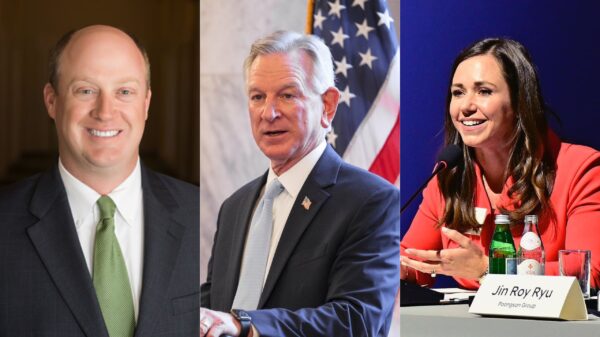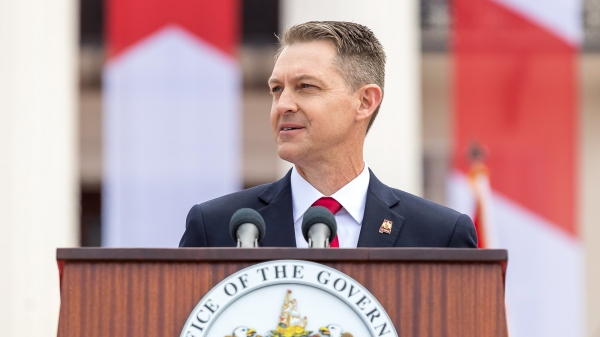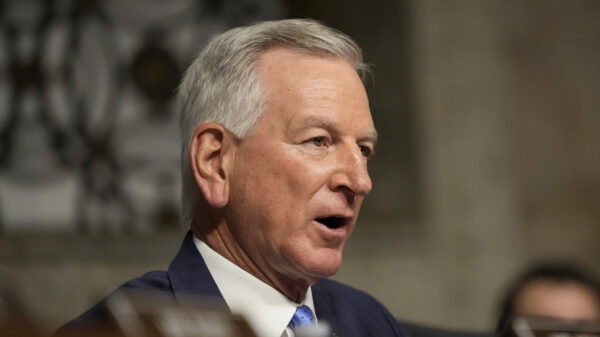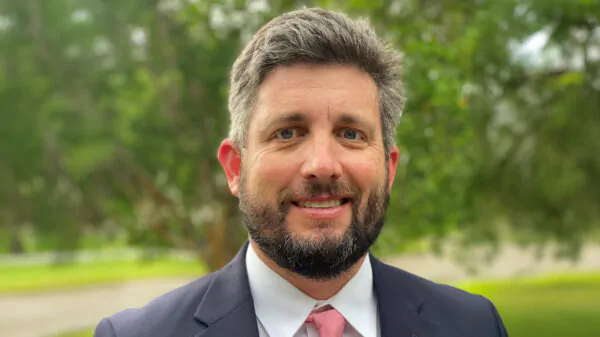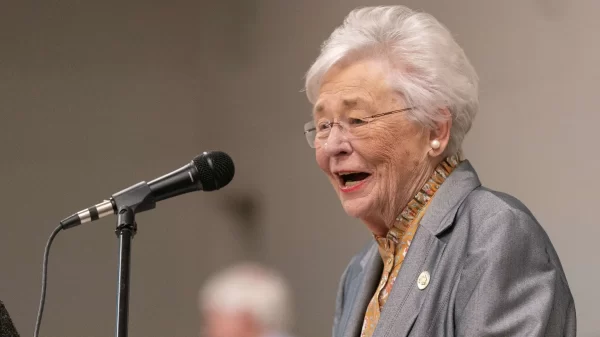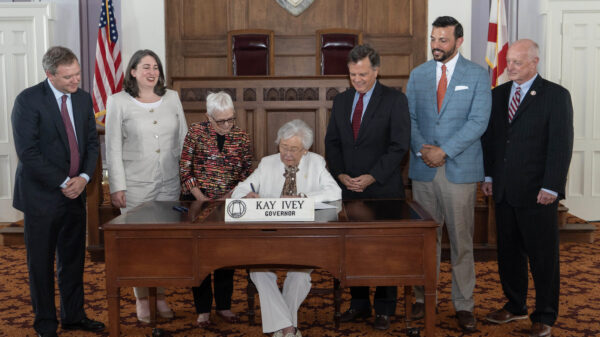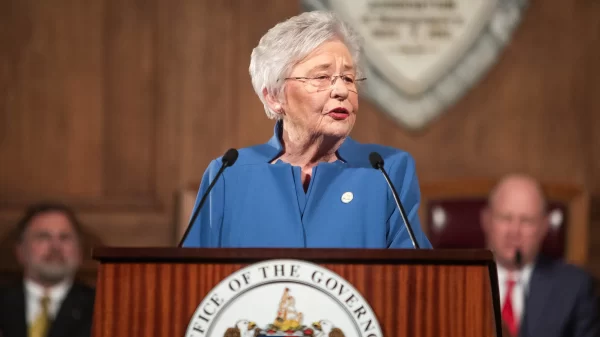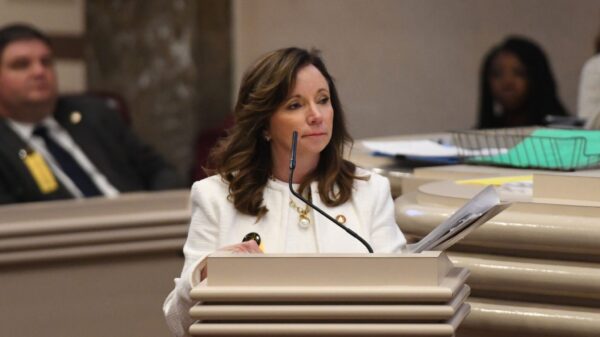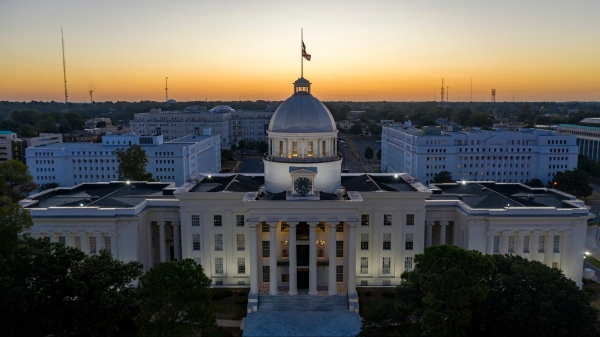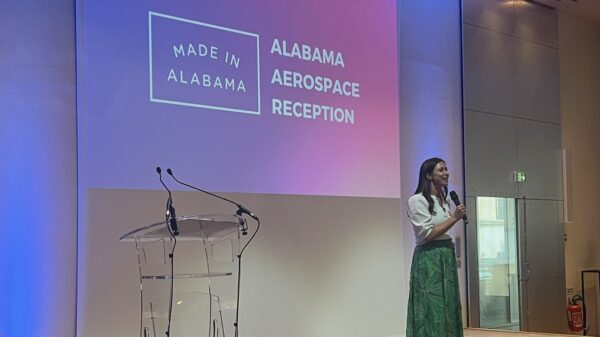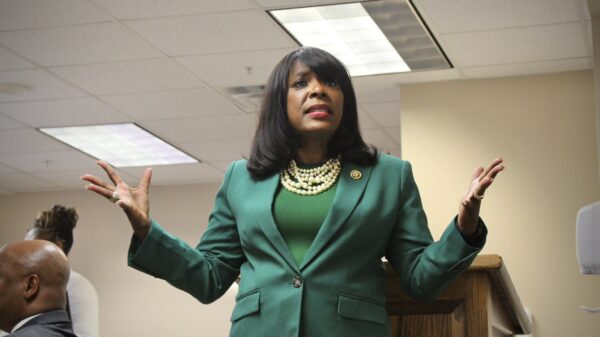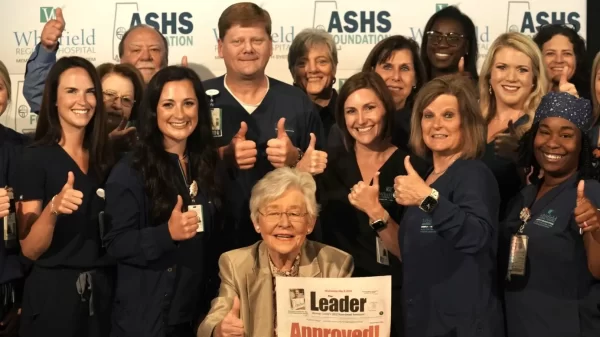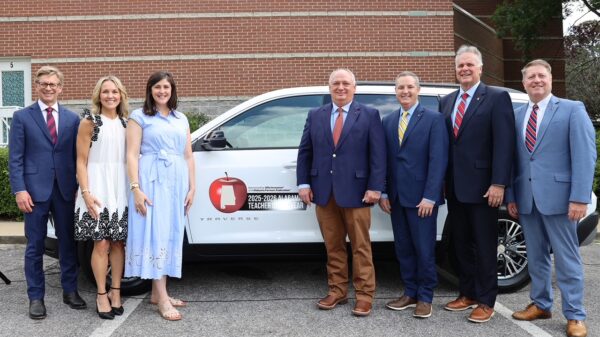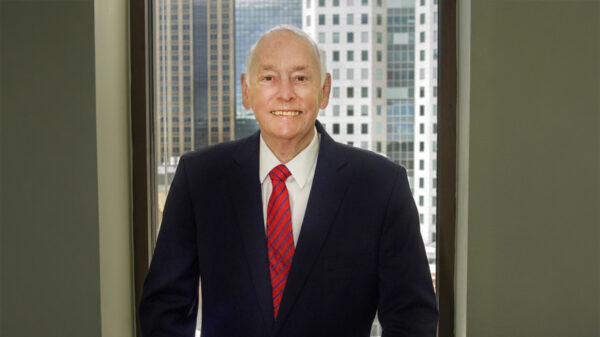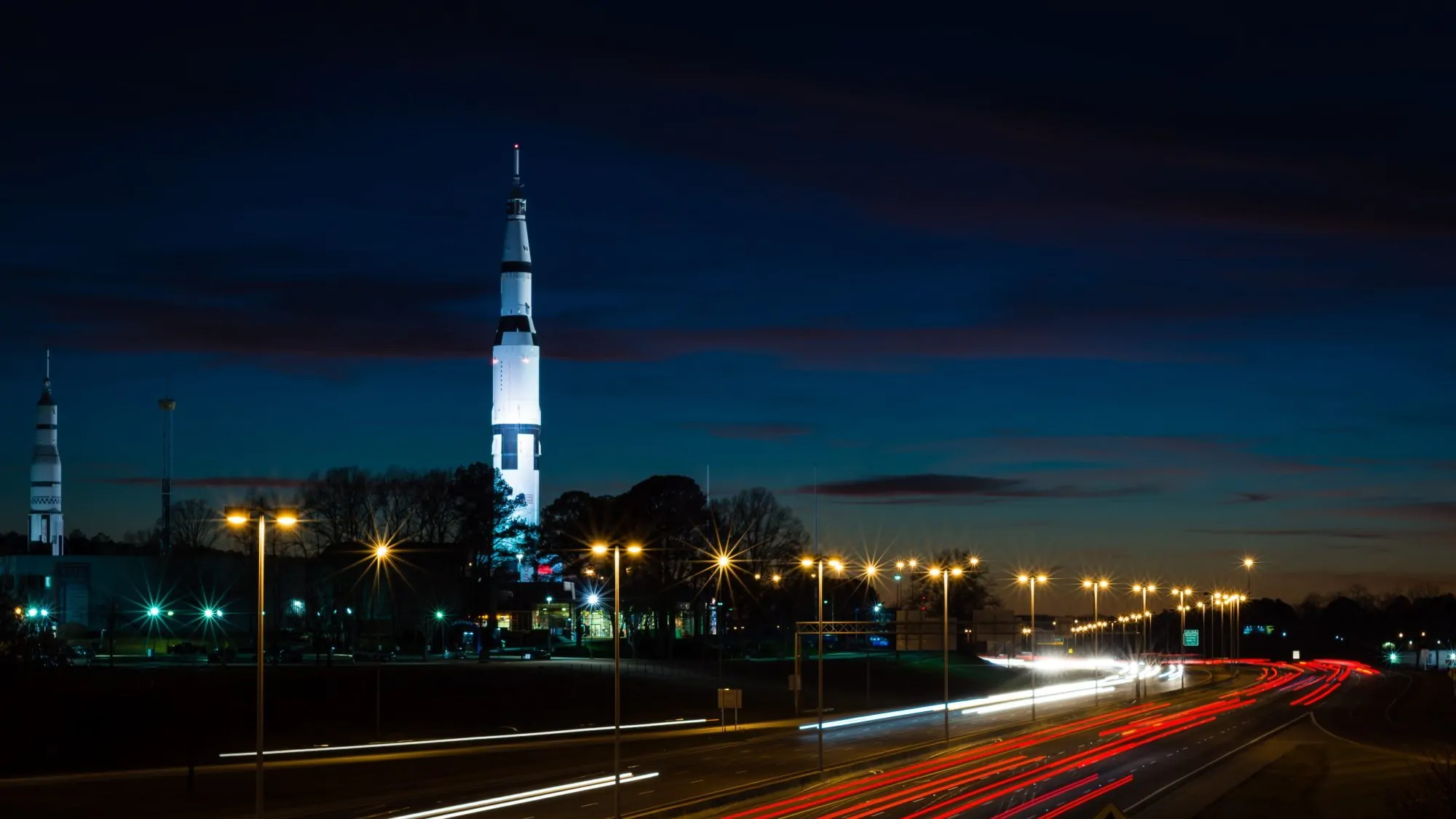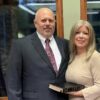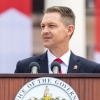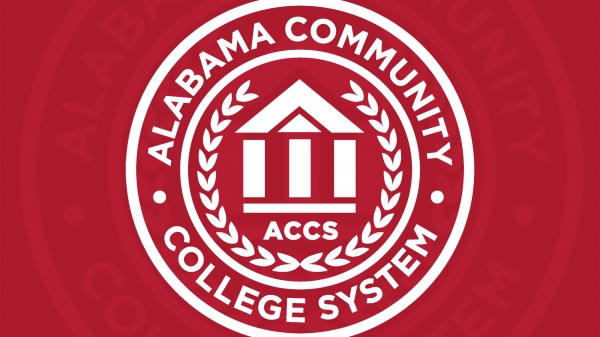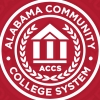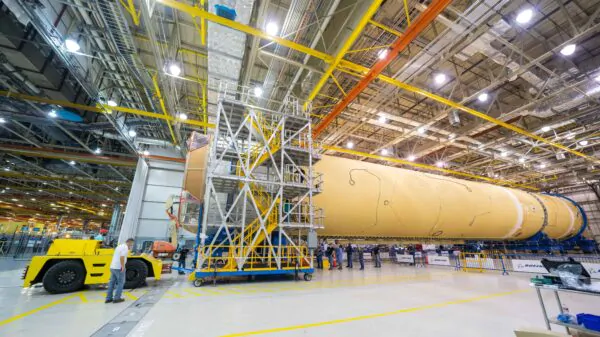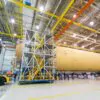NASA announced Friday that the space agency’s U.S Marshall Flight Center in Huntsville will act as the headquarters for the Human Landing System Program.
NASA made the announcement in Huntsville on Friday, in the shadow of the Space Launch System rocket test stand at Marshall. Congressman Mo Brooks, R-Huntsville, joined NASA Administrator Jim Bridenstine for the announcement that Marshall will lead the design and development of the Artemis program lunar lander. This vehicle will transport astronauts from the Moon-orbiting Gateway space station to the Moon’s surface. Brooks and Bridenstine were joined by Congressmen Robert Aderholt, R-Haleyville, and Scott DesJarlais, R-Tennessee.
“Decades ago, there was a national infrastructure program that was going to be built somewhere and our community lost. The wind tunnel ended up in Tullahoma, Tennessee,” Brooks said. “We came in second and the second-place prize was a bunch of German rocket scientists. Gosh, have we made the best of that losing proposition in our community? Those German rocket scientists in the early 60s at the instance of John F. Kennedy and the mission to the Moon that he was able to get underway, put us in a position where we were able to do as a nation something no other nation had done.”
“Today is a great day for the Tennessee Valley and the Marshall Space flight center,” Brooks said. “It is a great day in large part because of another political decision akin to John F. Kennedy’s in the 1960s. We have decided that we as a country are going to do something that only one other country in history has done and that other country was us, and we did it a half century ago. No other country has been able to do it in 50 years what we were able to accomplish in the 1960s and that is to go back to the Moon and put a facility on the South Pole, have a space station that is able to revolve around the Moon in lunar orbit and send astronauts to rendezvous with that space station as a place to stop before going to the Moon, landing on the Moon, doing the research that we are going to do on the Moon, getting back on that space station and then heading back to Earth.”
“That is an incredible achievement that we seek on behalf of our country and I am thankful that NASA Administrator Jim Bridenstine recognized the talent that we have here in the Tennessee Valley and the Marshall Space Flight Center, particularly the intellectual talent,” Brooks added. “Many of you may not know this, but we have the highest concentration of engineers in the United States of America. We have scientists, we have physicists, we have mathematicians, we have what we had in the 1960s, and that is the brainpower to take on this mission and to get it done. So, Jim, thank you so much for recognizing our community and what we have to offer for the United States of America in this endeavor.”
“The United States is in the space race again,” said economic developer Nicole Jones. “And the Trump administration is implementing policies related to space that our president stated we, as a nation, would accomplish.”
“We are talking about, in the first year, roughly $1.6 billion to make sure that we are on track to return to the moon by 2024,” Brooks explained. “Over that five-year period we are looking at somewhere in the neighborhood of $25 to $30 billion, and let me emphasize that has to be over and above what we are already spending on the science that NASA does, not only for our country, but also for the planet. That is a significant commitment, and I hope that Congress will be in a position to recognize the value, the advancements, that we are undoubtedly going to have, as we have had over the last 60 years for everything that NASA has done for us.”
“The project that is being announced today, that Jim Bridenstine has selected for our community, is roughly 360 jobs, roughly 140 that will be at Marshall Space Flight Center, with your other 220 spread out, as it should be, amongst various other NASA centers throughout the United States of America,” Brooks said. “For emphasis, each of those centers offer something to this mission and I thank them for the involvement that they are going to have, but I also thank NASA Administrator Jim Bridenstine for selecting our community for taking the lead role.”
“Marshall’s Lisa Watson-Morgan was recently named the program manager for the agency’s Human Landing Systems, and in this role, she will keep us on track toward meeting the challenge to send the first woman and next man to the Moon by 2024,” Bridenstine said.
Marshall’s Dr. Lisa Watson-Morgan is a Huntsville native and Butler High School graduate. She is a 30-year NASA veteran engineer.
“Alabama welcomes this incredible news,” Gov. Kay Ivey said on social media. “You couldn’t have chosen a more qualified & deserving site to lead this mission than the birthplace of America’s space program — @NASA_Marshall. Alabamians stand ready to once again lead our nation into the next space frontier.”
Congressman Bradley Byrne, R-Montrose, welcomed the announcement.
“Once again, Alabama has found itself leading the charge in aerospace technology,” Byrne said. “With today’s news, Huntsville and their outstanding workforce will be at the forefront of taking man back to the moon.”
Byrne is a candidate for US Senate and the Congressman from Alabama’s First Congressional District.
“Recall that in March 2017, dozens of us from the public and private sector attended a luncheon featuring Steve Cook, a member of the President-elect Trump NASA Transition Team,” Dr. Jones said. “Mr. Cook, a resident of Madison, Alabama, along with an elite group of space exploration-related professionals and academics, met from November 2016 through January 2017 and designed a strategic plan for the United States’ role in space.”
“Trump and the leadership he has surrounded himself with believe that we [the United States] can marshal our resources properly and lead in space again,” Jones continued. “Part of that strategy includes public-private partnerships; federal resources (NASA) can focus on exploring the frontier, and the commercial sector can focus on supplying space. That is exactly the structure the federal government implemented with Artemis. The goal of NASA’s Artemis program is to land Americans on the Moon by 2024 and establish a permanent American exploration base on the Moon. Several thousand employees from Marshall Space Flight Center (MSFC) and various north Alabama-based corporate partners are working on the Artemis project.”
“The exploration of space is critical to national security and maintaining status as superpower,” Jones concluded. “And with the recent celebration of 50 years of man on the moon, we could not be living at a better time in history to embark on this mission.”
NASA’s Artemis program goal is to land Americans on the moon by 2024 and establish a permanent American moon exploration. Artemis will be launched into space by the Space Launch System, the most powerful rocket ever built. Its design team is also headquartered at Marshall.

